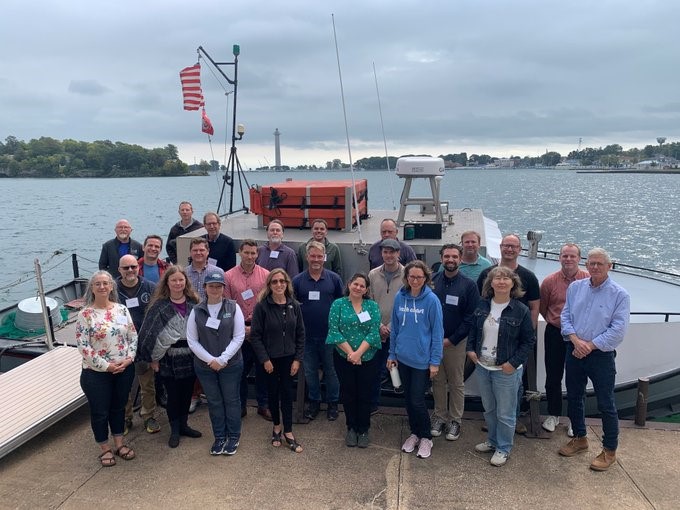Disturbance Ecology: Effects on Great Lakes Harmful Algal Blooms and Phycology
 Dates: September 27-28, 2023
Dates: September 27-28, 2023
Steering Committee: Leads: Heather Raymond (Ohio State University), Andrew Bramburger (Environment Climate Change Canada), Mary Anne Evans (USGS), Katie Stammler (Essex Region Conservation Authority), Nicole Zacharda (Great Lakes Commission), Connor Roessler (Great Lakes Commission), Reagan Errera (NOAA GLERL)
CIGLR Research Theme: Invasive Species & Food-web Ecology

The Ohio State University Stone Lab hosted Stone Lab hosted the September 2023 CIGLR Summit focused on cyanobacterial blooms this week. Harmful algal bloom experts from the U.S. and Canada discussed the latest ideas of why so many lakes are now experiencing blooms. Photo Credit: OSU Stone Lab.
Description & Goals: From September 27-28, 2023, a team of experts led by scientists from Ohio State University, Environment Climate Change Canada, United States Geological Survey, Essex Region Conservation Authority, Great Lakes Commission, and NOAA GLERL convened to discuss potential management strategies of cyanobacterial harmful algal blooms (cHABs) in the complex Laurentian Great Lakes system. The group also addressed the existing research and knowledge gaps in understanding how Great Lakes algal communities respond to changing environmental conditions. Many aquatic ecosystems that are experiencing increasing cyanobacterial dominance and associated cHAB events are not warm, eutrophic, or otherwise impacted in an absolute sense. However, many are undergoing rapid change as a result of climate change, watershed modifications, and non-indigenous species.
To ensure varied perspectives and contributions to the summit, specialists from the fields of phycology, limnology, molecular biology, microbiology, numerical ecology (modeling), and resource management were invited to assess interactions between Great Lakes algal communities and cHABs. The group is preparing a review paper of the summit outcomes for submission to a peer-reviewed journal. The paper will include a critical review of proposed cHAB drivers in lake systems, gaps in data and research, and recommended research priorities to provide a path towards improved management of cHABs on short and long time scales. The summit will also provide a framework for facilitating collaboration and coordination among Laurentian Great Lakes cHAB researchers interested in examining effects of multiple stressors on phytoplankton communities. For more on the summit and associated products, please visit the summit webpage.
